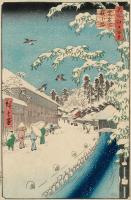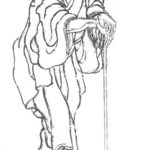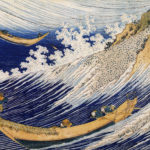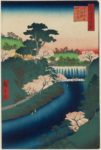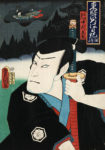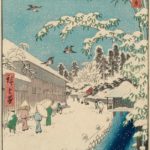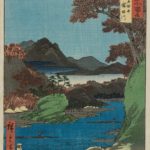Table of Contents
Biography of Utagawa(Ando) Hiroshige(1797-1858)
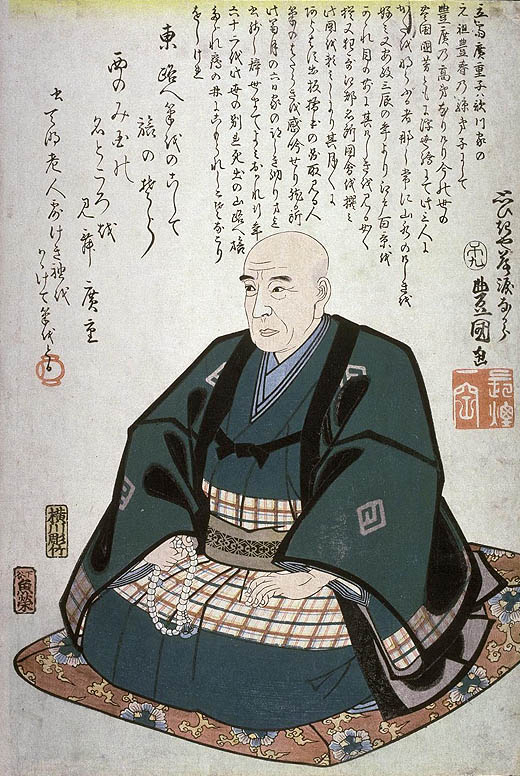
A son of fire fighter
The outstanding ukiyo-e artist, Utagawa (Ando) Hiroshige<歌川(安藤) 広重> was born in 1797 as the son of the official fire fighter Ando Gen-emon. His landscape woodblock printings took many Edo citizens all over Japan. However, he was not from the class of tradesmen and artisans.
Ando family belonged to the class of samurai. The eldest son Tokutaro(Hiroshige’s childhood name) should have succeeded his father’s job, but he really liked to draw pictures.
In 1809, he lost parents and inherited the work of fire fighter to make a living when he was only 13. It is said that the atmosphere of loneliness in his ukiyo-e artworks is influenced by having lost parents when he was a child.
He was a immediate follower of the shogunate, but the lower samurai at that time had a little salary, which was hard to support their family. Like other lower-level samurai, he also had a side job. It was a picture to draw.
Tryal and error as an ukiyo-e artist
He asked to become the pupil of the first Utagawa Toyokuni(初代歌川豊国) who achieved fame for portlete of kabuki actors and beautiful women. But the great painter already had too many apprentices, (incuding Kunimasa, Kuninaga, Kunisada, Kunimaru, Kuniyasu, Kuniyoshi, Kuninao, Kunitora, Kunitane, the second Toyokuni and Kunitsuna) to take a new one.
And he began to learn ukiyo-e under Utagawa Toyohiro(歌川豊広) who belonged to the same school to Toyokuni from 1811.
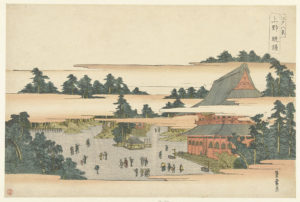
Toyohiro, the younger pupil of Toyokuni, often drew the woodblock printing of the landscape. Hiroshige, who later achieved the great success in landscape ukiyo-e, received considerable influence from his master.
In the next year, he was allowed to use the painting name of Utagawa Hiroshige. “広” is derived from his master, and “重” is one of the his real name(重右衛門, shige-emon).
Some people sad that his first artwork was “Monkshood” but they didn’t have conclusive evidence. As the surely his early works, we can identify “Nakamura Shikan as Taira-no Kiyomori and Nakamura Daikichi as Hachijo-no Tsubone” and “Nakamura Shikan as the seller of the tea whisk seller and the vendor selling soba at night”.
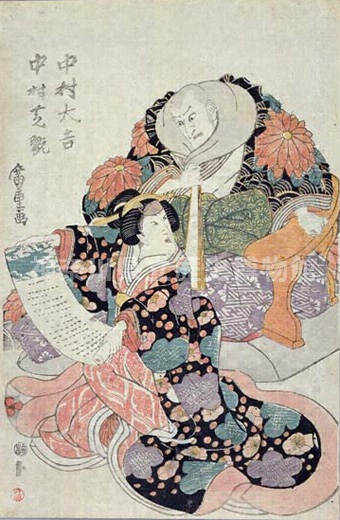
Though he tried many fields of ukiyo-e to gain success, he could not attract the attention of people, for two decades. Compared with Utagawa Kunisada(歌川国貞) who was active in the same period and school, he lived an obscure life.
Finally, when he used the name of 一幽斎(Ichiyusai), he produced “Famous Places of the Eastern Capital”(『東都名所』) and it led him the way of the landscape woodblock printing artist.
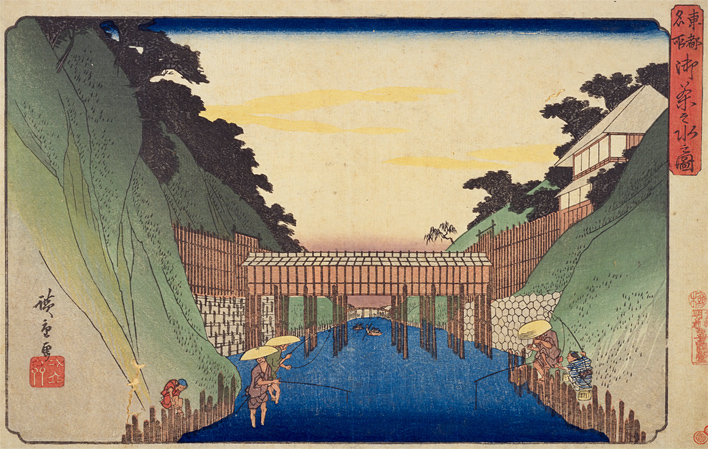
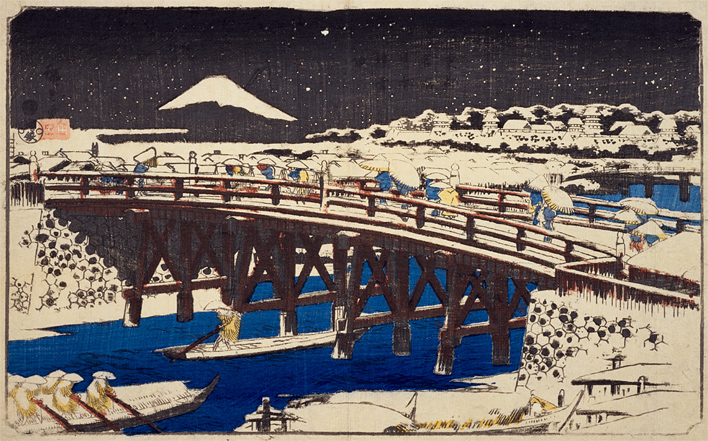
The great hit of the “Fifty-Three Stages on the Tokaido”
Considering to make hot works, he focused his attention on the popularity between Edo people of the travels. Hiroshige thought the series of the scenery which illustrated the post towns on Tokaido highway.
In addition to that, the well selling of “Thirty-Six Views of Mount Fuji” would have made an enormous boost for his new artworks. He didn’t have the relation directly with Katsushika Hokusai but surely received the influence from the much elder ukiyo-e artist.
He joined the the shogunate’s procession for presenting Hassaku orange the Emperor and drew roughly the post towns in 1832. Then he started to produce the series of “Fifty-Three Stages on the Tokaido”(『東海道五十三次』) in next year. The woodblock printings really caught on among people in a flash. The success made him in great demand.
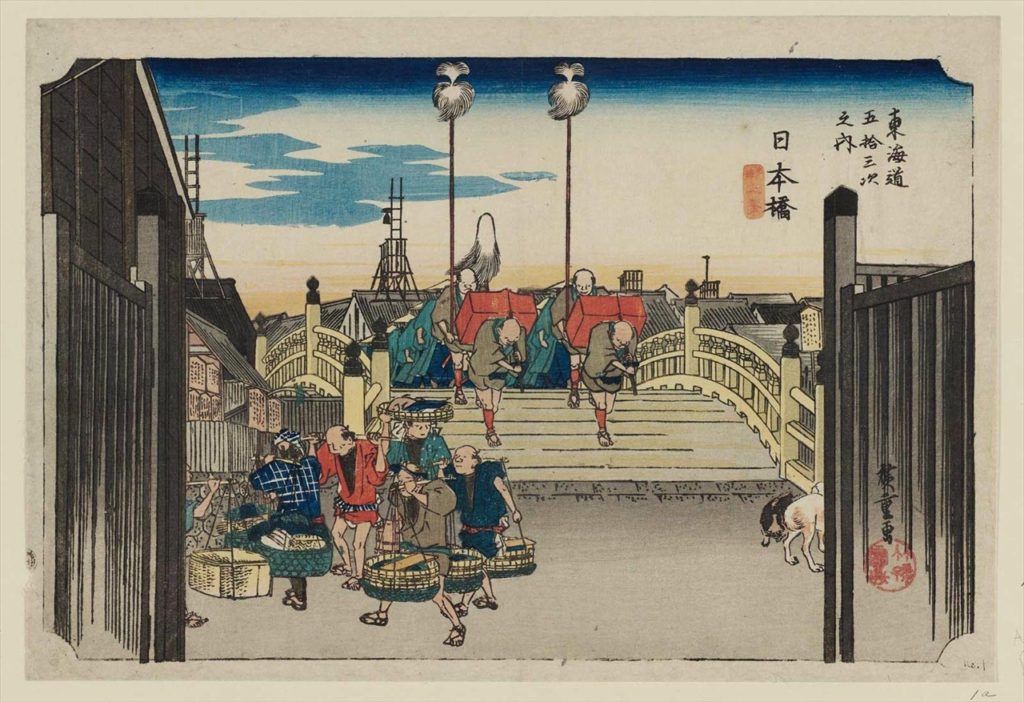
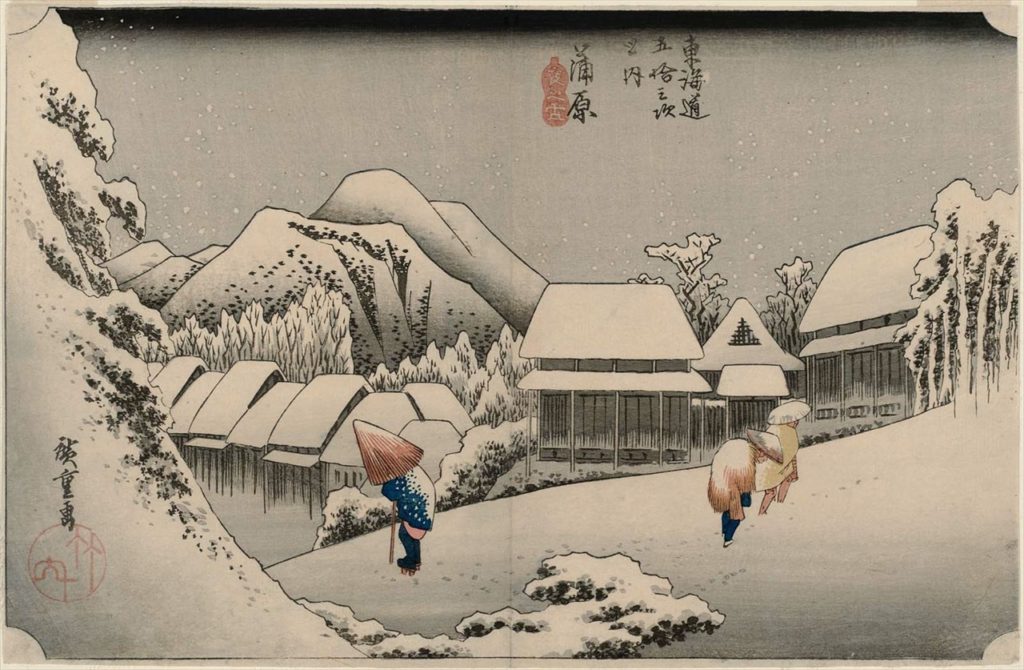
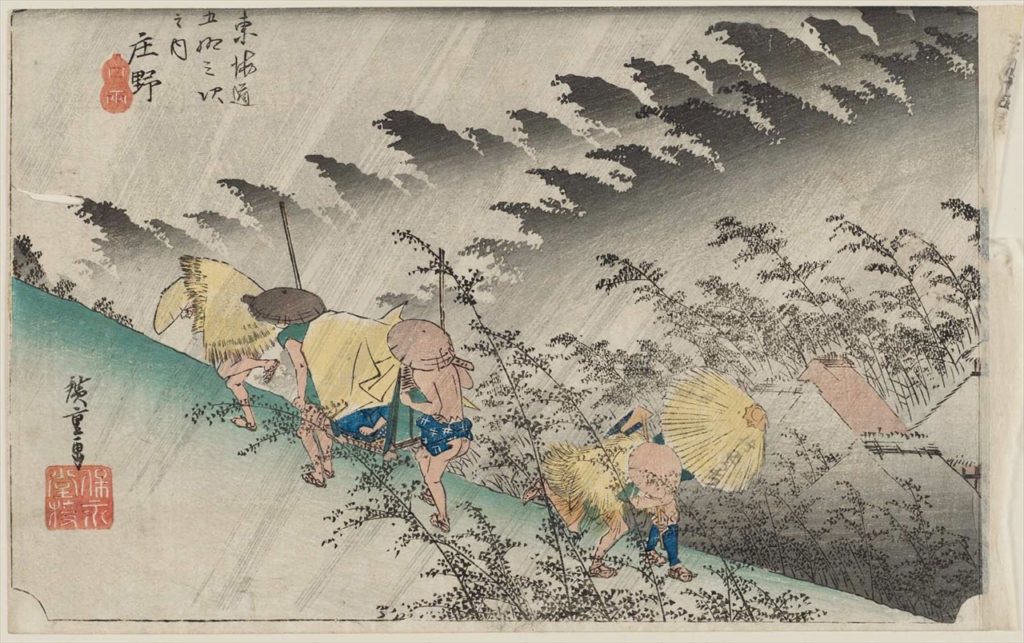
As a ukiyo-e artists of Utagawa school, Kuniyoshi (国芳) was really popular for Musha-e(warrior portrait), Kunisada(国貞) for Yakusha-e(Kabuki actor portrait) and Hiroshige for Meisho-e.
The master of landscape woodblock printings
After the success of “Fifty-Three Stages on the Tokaido”, Utagawa Hiroshige launched one after another.
- “Fifty-Three Stages on the Tokaido” seies 『東海道五十三次』 (1833)
- “Eight Views of Omi” series 『近江八景』(about 1834)
- “Eight Views of the Edo Environs” series 『江戸近郊八景』 (about 1838)
- “Sixty-Nine Stages on the Kiso-highway” series 『木曽街道六拾九次』 (1835-1839?)
- “The Monkey Bridge in Kai Province”『甲陽猿橋之図』 (1842)
- “The Fuji-gawa River in Snow”『富士川雪景』 (1842)
- “One Hundred Famous Views of Edo” series『名所江戸百景』 (1856-1858)
- “Famous Views of the Sixty-odd Provinces”(六十余州名所図会)(1853-1856)
- “View of the Whirl Pools of Awa”『阿波鳴門之風景』 (1857)
“One Hundred Famous Views of Edo” is the last artworks of him.
Books about Hiroshige

